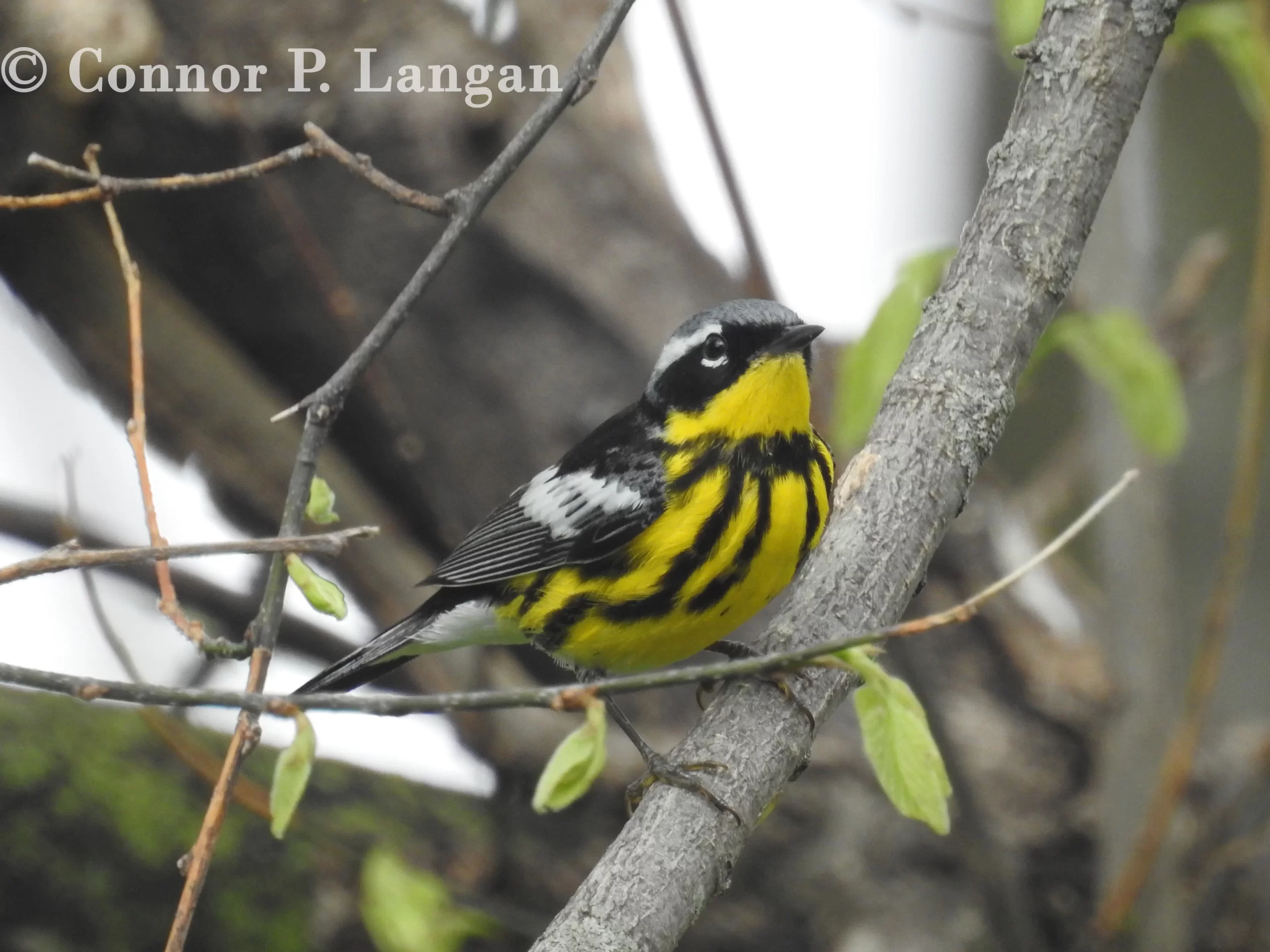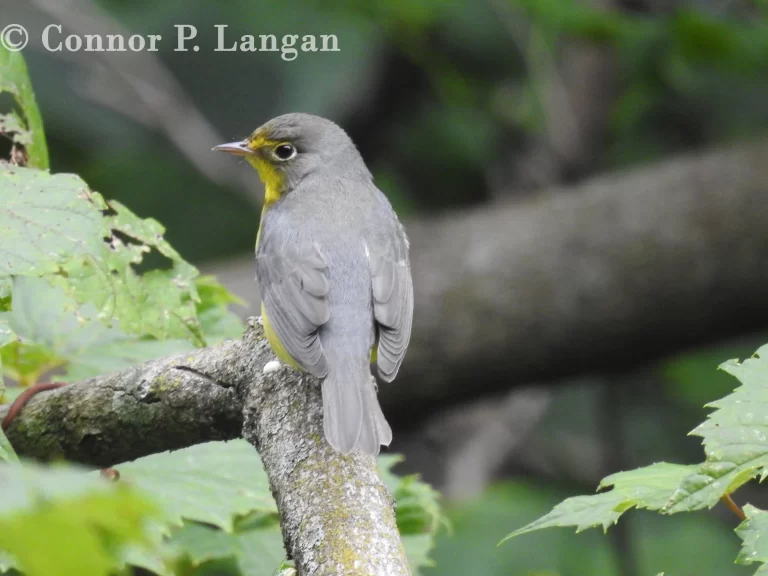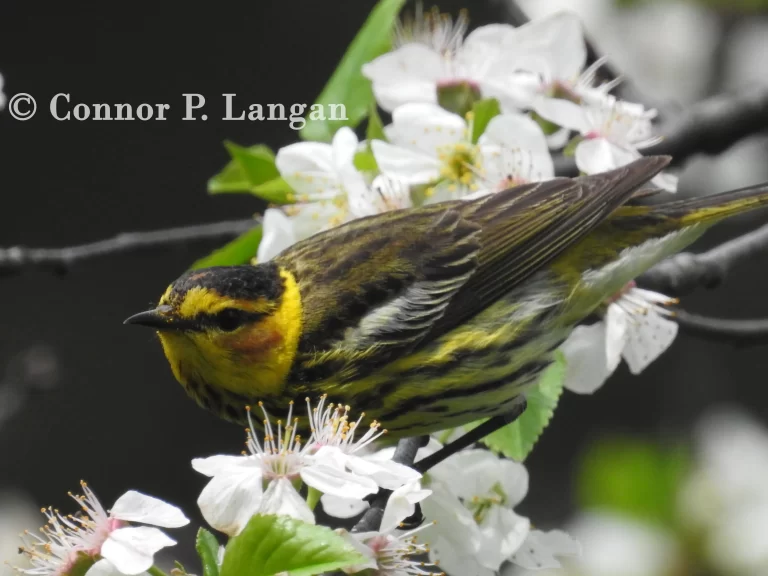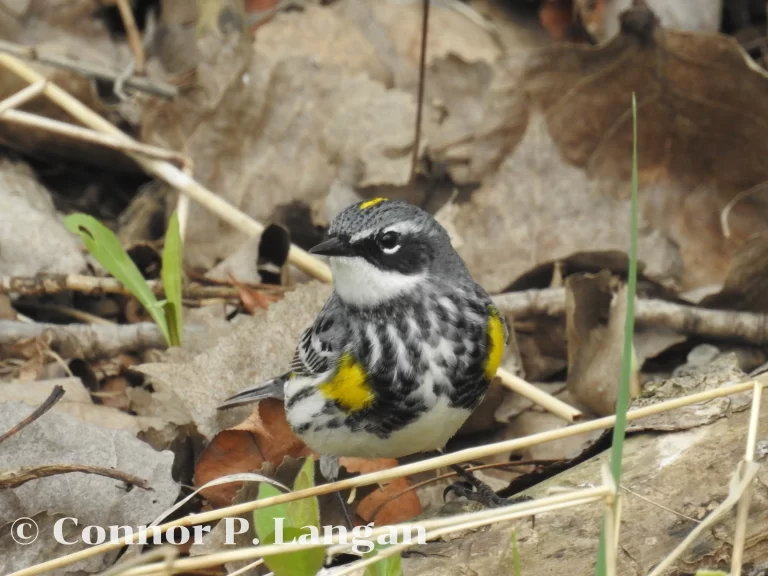Description
- A medium-sized warbler with a small beak and long tail, Magnolia Warblers are fairly recognizable with their striking plumage.
- Magnolia Warblers can measure anywhere from 4.25 inches to just over 5 inches in length. These birds weigh 0.25 ounces to 0.5 ounces.
- Male Magnolia Warblers have a bold array of colors within their breeding plumage-they have a black mask that extends over their eyes, a white arc under their eyes, a white “eyebrow”, a blue-gray crown, and a yellow throat. Males are yellow below with prominent black streaks. These birds have black backs, blue-gray and brown wings with two white wingbars, white undertail coverts, and a blue-gray tail.
- Females feature many of the same colors and patterns, though their black mask is minimal compared to those of male birds.
- Immature male birds do not display prominent black streaking on their undersides, while they lack a black mask completely. Immature males have white eyerings and faint white wingbars.
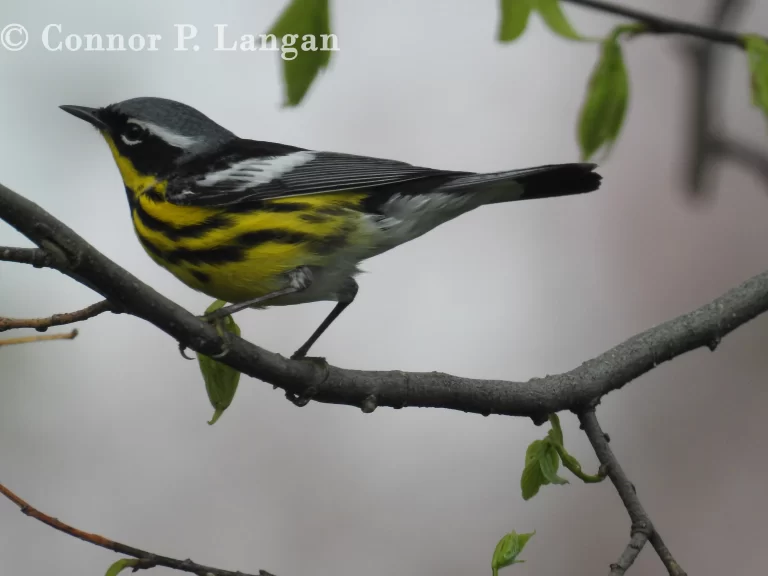
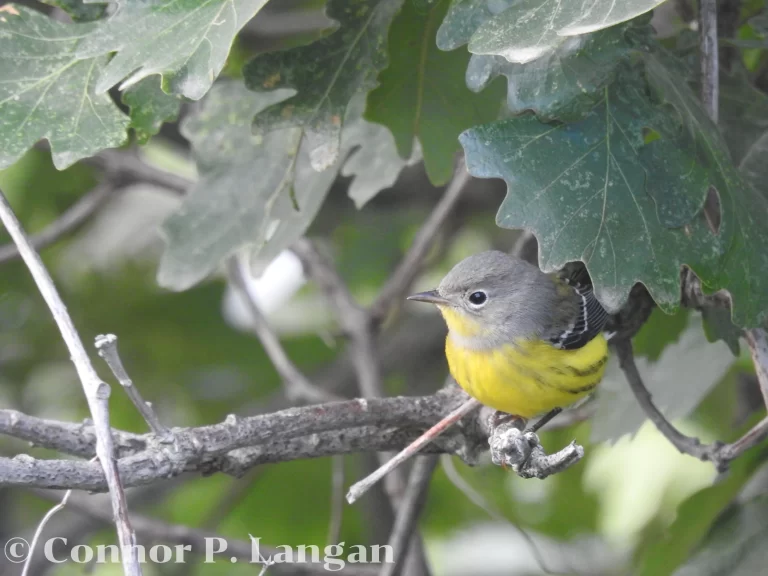
Behavior
- Magnolia Warblers pair up during the breeding season as they maintain their territory and defend it from intruders. During migration and winter, these birds will loosely join mixed species flocks of passerines as they forage.
Diet
- Magnolia Warblers are insectivores that specialize in consuming caterpillars.
Habitat
- Magnolia Warblers seek out stands of robust young conifers during the breeding season. These birds can appear in various locations during migration, often found in forests, parks, cemeteries, and anywhere with a decent amount of trees.
- Magnolia Warblers spend the winter in tropical forests, coffee or cacao plantations, and other areas with dense vegetation.
Range
- Magnolia Warblers breed in the Northeastern United States and the Upper Midwest. In Canada, they can be found throughout much of the boreal forest. Magnolia Warblers winter in Mexico, Central America, and the Caribbean.
Breeding
- Magnolia Warblers are monogamous by nature, but they will seek extra-pair copulations when opportunities arise. Males court females by singing and fanning their tails to display prominent white spots.
- While most male warblers do not assist with nest construction, male Magnolia Warblers defy the norm, as they help females with this process.
- Female and male birds use small branches as a foundation for their nest. They then weave together grasses and plant fibers to make a nest that does not appear to be as structurally sound as other warbler nests.
- Magnolia Warblers place their nests in dense conifers. Nests are placed off the ground near the base of the tree and they are usually towards the middle of a young tree.
- Magnolia Warblers could have one to two broods of eggs per year. Each clutch contains 3 to 5 eggs, which are incubated for about two weeks. Nestlings leave the nest around 10 days after hatching.
Backyard Birding
- Do not expect these insectivores to visit your bird feeders. Magnolia Warblers will also avoid nesting in birdhouses, as they are not cavity nesters.
- These warblers may show up in your yard during migration if you have an assortment of trees and shrubs in which they can forage. Magnolia Warblers will bathe in bird baths if they are not out in the open.
Population Status
- Unlike many warblers, Magnolia Warbler populations have increased in the last half-century. The Magnolia Warbler population numbers almost 40 million, and their population seems to be doing well as a whole.

